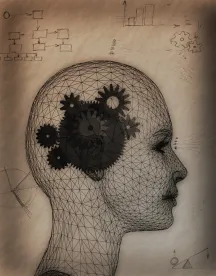In its Final Written Decision, the Board found that Petitioner had not shown that any of the challenged claims (1, 8, 9, 18, 29, 30, 54, 62-64, and 70) of the ’023 Patent are unpatentable. The ’023 Patent describes a system for controlling headlamps on a vehicle in response to sensing the headlights of the oncoming vehicles and taillights of leading vehicles.
The Board began with claim construction, noting that the ’023 Patent is expired. Therefore, the Board interprets claim terms as a district court would under the Phillips standard. The Board construed two terms in the Decision on Institution. Neither party proposed different constructions, therefore, the Board adopted the prior constructions.
The Board then turned to the first ground of unpatentability – anticipation of claim 18 by Yanagawa. Patent Owner argued that Yanagawa does not disclose a microprocessor-based control as required by claim 18. Petitioner relied on the testimony of its expert to show that Yanagawa does disclose this limitation, but the Board found that the expert’s testimony was simply conclusory statements unsupported by any evidence or analysis and did not find it persuasive. The Board pointed to a dictionary definition of “microprocessor” to further support its conclusion that Yanagawa does not disclose this limitation.
Next, the Board analyzed the second ground of unpatentability – that claims 1, 8, and 9 are obvious over Yanagawa, AAPA, Bendell, and Koshizawa. Patent Owner’s primary argument regarding claim 1 was that none of the references disclose or suggest “a control means for identifying headlights of oncoming vehicles and taillights of leading vehicles” as construed by the Board. After reviewing Patent Owner’s expert testimony, the Board agreed with Patent Owner failed to show that Yanagawa discloses structure equivalent to the “control means” in claim 1, and, therefore, dependent claims 8 and 9.
The Board then reviewed the third ground of unpatentability – that claims 30, 54, and 62-64 are obvious over Yanagawa, AAPA, and Bendell. The Board noted that these claims also require a microprocessor-based control, therefore, just as above, the Board found that Petitioner had not shown that this limitation is disclosed or suggested by the prior art. Regarding claim 62, the Board also found that the references to not disclose or suggest a control individually accessing sensors, once again discrediting Petitioner’s expert’s testimony for being conclusory.
Finally, the Board found that the last two grounds of unpatentability – obviousness of claim 29 over Yanagaw and Vellaott, and obviousness of claim 70 over Yanagawa, AAPA, Bendell, and Vellacott – failed for reasons similar to the grounds above.
TRW Automotive US LLC v. Magna Electronics Incorporated, IPR2014-00251
Paper 34: Final Written Decision
Dated: June 25, 2015
Patent 6,097,023
Before: Justin T. Arbes, Patrick R. Scanlon, and Jo-Anne M. Kokoski
Written by: Scanlon



 />i
/>i

